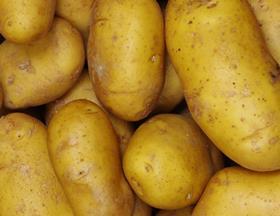
The number of active ingredients in pesticides used on onions, potatoes and wheat has increased by between six and 18 times over the past 40 years, new data obtained by the Soil Association has revealed.
Archive data released for the first time by former government agency Fera Science was presented at the Royal Society of Medicine conference this week (20 November).
The figures obtained by the Soil Association covered the number of active ingredients applied to crops before harvest, which the body said is 'more relevant to consumers and their food' than the weight of pesticides used, which has nearly halved since 1990 thanks to precision technology.
CEO of the Crop Protection Association, Sarah Mukherjee, said: “In 1990 the weight of active ingredients applied was 34.5 m kg, in 2015 it was 17.8m. This is due to advances in product development, formulation and application which ensures that modern pesticides are safer and more precisely targeted, meaning farmers need to use less active ingredient.
“While the number of active ingredients used on these three crops has increased, the levels of residues found in the final produce remains low. If you look at potatoes as an example, the Soil Association claims an average of 30.8 active ingredients were applied to potatoes. Yet the government’s Pesticide Residues in Food (PRiF) monitoring programme shows that in 2015 of 156 samples of potato, 73 samples contained no residues at all and only 31 contained residues of more than one pesticide.'
The Soil Association also spoke about the lack of research on the effect of a ‘cocktail’ of pesticides on human health, stating that while pesticides are tested and approved individually, multiple active ingredients are applied to different crops. The long-term and accumulative effects of pesticides on humans are therefore not monitored, the organisation said.
Professor Carlo Leifert, director of organics research at Southern Cross University, Australia, who presented the research, said: “Supermarkets recognise there is a problem with some pesticides. No farmer likes to spray, but if he is dependent on making money it is very difficult to give up that spray. That is the circular situation we get ourselves into because use of pesticides is embedded in the farming system.”
Soil Association policy director Peter Melchett said: “It is frightening to learn just how many aspects of the pesticides we eat in our food are untested by pesticide safety regimes around the world, including in Europe. People eat food sprayed with increasingly complex mixtures of pesticides, and no safety testing is done on mixtures.”
But Mukherjee said that existing regulations 'are effective in protecting human health' from exposure to the low levels of residues present in food, and managing the risks from these substances individually 'should' ensure that combinations of substances do not present a concern for human health. 'The current risk assessment methodology used by regulators is conservative enough to take account of the potential impact of multiple residues,' she said.
'Every day we are typically exposed to numerous natural and man-made chemical substances. It is impossible to predict all the combinations in all possible concentrations that could arise – let alone assess them all.'
The NFU and the Crop Protection Association were present at the meeting and had opportunities to respond.



